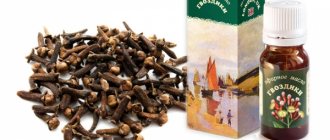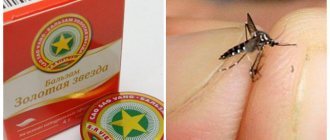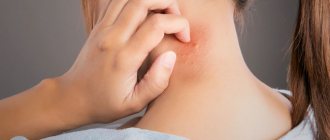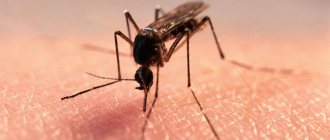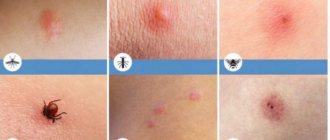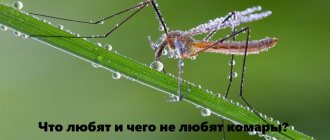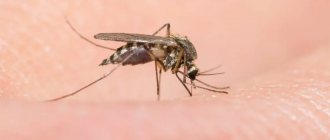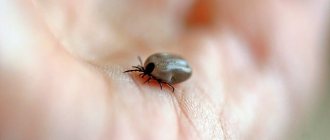This year marks 20 years since Russia first learned about an exotic disease - West Nile fever (WNF). The virus lived in African countries, but gradually moved to the European continent.
WNV is transmitted by mosquitoes. Every year in Russia and Europe people die from this infection.
“This year we have already treated 20 people, and the victims continue to arrive,” states Irina Koshevko, a doctor at the infectious diseases department of City Hospital No. 1 Semashko in Rostov-on-Don . – Every year the number of cases of West Nile fever increases. If there are mosquitoes, there is a danger of infection. But there are also positive aspects - we have become more accurate in diagnosing the disease, and we are already paying closer attention to the symptoms. Alas, the disease has not been fully studied. And there is no specific treatment. Depending on the severity of the case, we select therapy.”
A mosquito bite today can land you in the hospital. Photo: Frame youtube.com/ Vitaly Kolbasin
The female mosquito needs to drink blood to survive the winter. Insect activity intensifies in the fall, so mosquitoes choose more and more new victims.
Reports of victims of West Nile fever are coming from all over Europe today. More than 150 people fell ill in Greece, 15 of them died.
A similar picture was observed in Europe in 2022 - the fever officially infected more than 1,300 Europeans. The most cases were registered in Italy (495). People also got sick in Hungary, Greece, Romania, Croatia and other countries.
Question answer
What is West Nile fever and what are its symptoms?
In Russia, the virus has settled in the south of the country - in the Astrakhan, Volgograd and Rostov regions. If you look at the map, the picture is bleak. The fever is gradually moving north. Astrakhan - Volgograd - Rostov-on-Don - and now cases have already been recorded in Voronezh and Lipetsk.
In Russia, special statistics are not kept on those who die from fever, since people die not from the virus itself, but from its complications – meningitis. This year, two people died from the effects of fever in the Rostov region. Official sources provide information on individual regions - for example, in the Volgograd region, from 1999 to 2012, 59 people died from the consequences of the virus.
Physiological abilities
The number of times a mosquito can bite depends on how calmly the insect feeds. Initially, you should understand that males do not bite at all. The diet of mosquitoes is determined by gender. The need to replenish blood reserves arises in fertilized females. Before this, they also feed on nectar and plant juices. Therefore, the male cannot bite even once. Spends most of his time on lawns with flowers and in the forest. The maximum lifespan of males is 10 days. Insects die soon after fertilization, having completed their main mission.
Mosquito bite
The process of egg formation takes about 3 days. Once fertilized, the female does not bite or feed. Its main task is to find a suitable body of water and lay eggs. Immediately begins to search for the victim, the reproduction process is repeated again. Theoretically, a mosquito bites during its life - 56 days, about 19 times. Provided that he drinks the required amount of blood in one bite.
Practical possibilities
To procreate and replenish energy reserves, mosquitoes use human blood, animals, and even birds. A mosquito senses a food source at a distance of 30 m. To meet its own needs, an insect can bite a person or animal. In the latter case, the parasite risks his life less and eats calmly. In a calm environment it takes only one bite.
As for people, one female can bite up to 15 times during the night. But in most cases this number of times is not required. A sleeping person's sensitivity threshold decreases, he does not feel pain when bitten, does not make sudden movements, and does not interfere with the meal. The female tries to drink all the amount she needs at once. If the “wrong” vessel was initially chosen, it may bite twice.
Mosquito
Mosquitoes also bite waking people; they are not frightened off by waving their arms, branches, or jumping. The victim can immediately feel the piercing pain from a mosquito bite and react instantly with a clap on the affected area. In most cases, this ends in death for the pest. If the insect has managed to hide, one mosquito can bite as much as it needs to be completely saturated.
How to protect yourself from vileness
When going for a walk along the river bank or into the forest, you should wear light, closed clothing. Dark colored fabrics attract insects. The midge is not able to bite through even thin fabric (unlike a mosquito), but can travel throughout the body for a long time in search of open areas of skin. The cuffs and collar should fit snugly to the body; it is better to tuck the trousers into socks or tie them with ties, preventing the insect from getting under the clothes. You can use mesh masks that beekeepers use, however, in hot weather they make breathing difficult, and in a crowded place they may not be clear.
You can repel insects with a special spray or cream
When choosing a repellent for protection, you need to pay attention to what insects it helps against. An aerosol or mosquito repellent cream may not cope with midges; there should be a corresponding mark on the tube
Consumers leave good reviews about the following drugs: Deta, Taiga, Moskitol, Gardex, Off.
Among folk repellents, treating clothes with water and essential oils of lemon, orange, eucalyptus, lavender, mint, cloves, geranium, and tea tree gives good results. An infusion of wormwood (100 g of crushed roots boiled for 10 minutes in a liter of water) or vanillin (a packet of seasoning for half a liter of water) will help. A few drops of aromatic oil or vanillin powder can be mixed with baby cream and applied to exposed areas of the body.
An effective and powerful means of repelling gnats is birch tar. It is mixed in a 1 to 1 ratio with vegetable oil or melted fat, and lubricated on exposed skin. You cannot leave the mixture on the body for a long time; after a few hours it should be washed off with warm soapy water.
To prevent insects from flying into the house, windows and doors should be protected with mosquito nets. You can’t do without a net even when spending the night outdoors. Nets and door frames can be sprayed with aqueous solutions of essential oils. Fresh sprigs of pyrethrum, tansy, cedar, and pine cones can be laid out on the windowsills and porch. Their smell will repel not only midges, but also flies and ants.
You can use an electric fumigator with an appropriate midge repellent. Lighting a scented candle or stick with the scent of vanilla, eucalyptus or mint will help.
How to protect yourself
Firstly, you can use means that physically restrict access to the body - these are mosquito nets, mosquito nets, curtains and thick clothing. Secondly, insecticides fight mosquitoes, that is, substances that destroy insects and repellents that repel them. Insecticides are toxic and are not applied to the skin, but they can be used to treat premises. To spread the substance over a large area, for example, in a room, fumigators are used - ignited spirals or electrical devices with replaceable cartridges
It is important that the windows in the room are open - then insecticides will not accumulate to quantities dangerous to humans
Summarize
So we found out why mosquitoes are dangerous for people. For a long time, humanity has been waging a stubborn struggle and spending billions to protect itself from annoying insects. In Singapore, for example, they managed to get rid of mosquitoes by taking tough measures at the state level. But everything in nature is interconnected, and the destruction of one species will inevitably lead to the death of another, and nature loves harmony. This concludes our article about dangerous mosquitoes. The editors of TopCafe are looking forward to interesting comments from you.
Editor's note: This article has been updated since its original publication on December 14, 2022.
How much blood does a mosquito drink?
Quick answer: a mosquito drinks up to 5 mg of blood.
Did you know that mosquitoes have been known since the Cretaceous period? Currently, there are more than three thousand species of mosquitoes in the world, which are classified as 38 species. In our country, fortunately, no more than a hundred species are found.
You've probably already heard that only females bite humans. This is due to the fact that mosquitoes need blood to produce eggs.
The female lays eggs every few days, and their total number can range from 10 to up to 300 eggs. As you may have guessed, if there is no blood, then there will be no offspring for mosquitoes, although some urban species have adapted to unusual conditions and can lay eggs even without consuming blood. True, the number of eggs is very small.
Interestingly, depending on the type of mosquito, the insect needs a different amount of blood to mature the egg. For example, if one species requires 0.44 mg of blood for this, then another requires 0.65 mg. This means that with the same amount of blood, the female of different species of mosquitoes will be able to recreate a different number of eggs.
After the mosquito drinks blood, it still experiences problems with orientation in space for some time, although this problem quickly disappears.
By the way, fun fact. In order to suck all the blood out of a person, about 200 thousand mosquitoes are needed.
Life cycle
However, males have to wait almost one day to achieve complete formation of the reproductive organs. They spend this enormous amount of time eating nectar, unlike their fellow tribesmen.
They don't use websites or bars where they can meet, male mosquitoes use a different method to find a mate.
To mate, the frequency of wing vibrations is listened to, which is usually between 250 and 500 beats per minute.
Gender differences
Once the mosquitoes couple and the females are fertilized, the mosquito's life cycle is perpetuated. After mating, the male lives for three to five days unless killed or eaten. Females mate only once in their lives. They live much longer than the opposite sex.
The lifespan of a female mosquito depends largely on the level of heat and moisture in the environment. She can live for a whole month or two in ideal conditions. During this time, it will lay eggs at night every three days.
They don't travel much. As a rule, no more than one and a half kilometers from the hatching site. The female produces up to 500 eggs before finally dying.
However, this entire life cycle is extremely dependent on water temperature (the ideal water temperature for larvae is between 23 and 26 degrees). A mosquito goes through each stage of its life very quickly, about four to fourteen days, under the right conditions.
Most species of mosquitoes lay their young in batches of 50 to 100, which float together on the surface of the water like a raft. They do this on water that collects in holes, ditches, even your dog's water cup.
However, some species lay them in moist, often flooded soil, waiting for the next rise in water. They can survive winter until spring or summer rains.
Insect eggs left on moist soil live for a year until the ground is flooded again.
Within a week, the mosquito larva transforms into a pupa, which grows special tubes for breathing atmospheric oxygen. The individual remains in this state until it develops wings. This takes several days. Having become a full-fledged two-winged mosquito, the insect sets off in free flight and immediately begins an active search for food.
Few people know how and how long mosquitoes live, and what conditions are most favorable for them. Their life begins with hatching from an egg laid by the female in some stagnant water. The first stage of the life cycle takes place in this body of water. Being a larva (very similar to a small worm), the future mosquito passes through itself up to a liter of water per day.
The next stage of development is the transformation of the larva into a pupa and the hatching from it of an adult capable of flight. Actually, this is how these little “vampires” appear. The lifespan of a mosquito depends on temperature, its gender and the abundance of food. It can vary from two weeks to several months.
Mosquitoes
The deadliest animal on Earth is not a snake, a poisonous spider, a tiger or a shark, but a mosquito that carries dangerous diseases. First among them is malaria.
WHO estimates that up to 700,000 people die from malaria every year, and the number of people infected hovers around 200 million. Interestingly, the infected insects themselves do not suffer at all from the dangerous disease.
How did mosquitoes manage to gain protection?
When a malaria mosquito bites a person, plasmodia, parasitic single-celled organisms, enter the bloodstream along with saliva.
Settling in the liver, the parasites begin to multiply, forming mononuclear individuals called merozoites. After some time, merozoites enter the human blood and attach to the surface of the membranes of erythrocytes - red blood cells.
At this moment, malaria begins to manifest itself: fever, chills, and anemia appear.
But unlike humans, mosquitoes do not have red blood cells - their role is played by so-called hemocytes, which are contained in hemolymph - a colorless liquid that acts as blood.
Studies conducted on several dozen mosquitoes living in malaria-prone areas showed that hemocytes, when released into the hemolymph of parasites, secrete tiny extracellular vesicles called microvesicles. This, in turn, gives a signal to protective proteins to overcome the emerging threat.
How many mosquitoes does it take to drink all the blood from a person?
Perhaps you have heard about the terrible execution among the taiga tribes, when a guilty person was sent naked into the taiga to be eaten by mosquitoes or, tied to a tree, left to die a painful death. Or maybe in nature they were attacked by hordes of mosquitoes? One way or another, it’s interesting to know how many mosquitoes it takes for them to completely drink a person’s blood? Let's figure it out.
Authoritative sources claim that the blood volume of an adult of average height and build is 5-6 liters, so let's take the average value of 5.5 liters and build on it.
A typical mosquito can drink between 0.002 and 0.005 ml of blood at a time. In addition, this value will be influenced by how hungry the female mosquito is, and how long she can sit on the skin and practice vampirism with impunity. It is advisable to take a value of 0.003 ml of blood per mosquito. Dividing the values (5.5 liters), we get a figure equal to approximately
1,800,000 mosquitoes.
Mosquitoes do not transmit HIV infection!
At the beginning of the AIDS epidemic, there were concerns that HIV infection could be transmitted by mosquitoes, bedbugs and other blood-sucking insects.
If this mode of transmission were possible, the geographical spread of the epidemic would be completely different from that which exists now.
When a mosquito bites a person, it injects not the blood of the previous victim, but its own saliva.
Diseases such as yellow fever and malaria are transmitted by certain types of mosquitoes because the pathogens that cause these diseases can live and reproduce in their saliva.
But HIV is not able to multiply in the body of a mosquito or any other bloodsucker, therefore, even if it enters the body of an insect, it does not survive and cannot infect anyone.
In the mosquito's proboscis there is a valve-like device through which blood can only flow in one direction - inward, so that the mosquito cannot release the blood of the person it bites out.
Mosquitoes, bedbugs, lice and other insects do not carry the human immunodeficiency virus and do not get AIDS.
The largest mosquitoes in the world are representatives of the centipede mosquito species. Some specimens can reach a length of up to 10 cm, and what shocks others is not the length of their body, which remains relatively small, but the length of their legs. You should not be afraid of long-legged mosquitoes: for humans they are completely harmless and will not drink a milligram of blood.
Share with friends ;
Area
Mosquitoes are widespread throughout the globe and inhabit all continents except Antarctica. The widest range is the common mosquito (Culex pipiens), which is distributed everywhere where humans, its main victim, are found.
In warm and humid tropical regions they are active throughout the year, but in temperate regions they overwinter, entering diapause at one of the developmental stages (usually the adult or egg stage) during the cold season. Arctic mosquitoes remain active for only a few weeks a year, when heat causes thermokarst pools of water to form on top of the permafrost. However, during this time they manage to breed in huge quantities - swarms of mosquitoes can take up to 300 ml of blood per day from each animal in the caribou herd.
The eggs of mosquitoes living in temperate latitudes are more resistant to the negative effects of cold than the eggs of mosquitoes common in warmer climate zones. They can even withstand exposure to snow and freezing temperatures. In addition, adult individuals can survive throughout the winter in habitats suitable for their wintering (for example, warm and humid basements of residential buildings).
Distribution media
Humans have contributed to the spread of various species of mosquitoes throughout the world and their movement over long distances into regions where they are not native. First of all, these are journeys along sea routes, in which eggs, larvae and pupae of mosquitoes are transported in worn-out tires filled with water or containers with cut flowers.
However, in addition to sea transport, mosquitoes have actively mastered travel on personal vehicles, trucks, trains and even airplanes. Thus, the spread of mosquitoes is difficult to control, and even quarantine measures have proven to be ineffective and difficult to implement in practice.
Where do house flies come from and how to get rid of them?
The small black flies that so annoy housewives are extraordinary insects. The unique ability of these malicious flying creatures to appear as if out of nowhere gives them a certain mystical aura. However, the secret of the appearance of swarms of midges in hermetically sealed apartments has nothing to do with magic. Drosophila flies, of course, do not have the phenomenal gift of seeping through walls. In fact, midges end up in tightly sealed rooms along with food brought from outside, and the larvae and eggs of fruit flies can hide not only in vegetables and fruits, but also in mushrooms, cereals and garden flowers.
Each fly individual does not live long. Appearing into the world at dawn, it dies in the evening of the same day, but if there is food supply for it in the apartment, namely a supply of spoiled vegetables and fruits, the wine fly manages to lay a huge number of eggs on them within a day. Thus, the number of midges begins to increase exponentially, however, in fairness, it should be noted that in winter fruit flies do not reproduce as actively, but if you do not fight them, even in cold weather they can fill the entire house in a few days.
In addition to rotten fruits, midges love indoor flowers, or rather, the moist soil in which they grow. In addition, the proliferation of midges that have entered the house is facilitated by stagnant water in the aquarium, dampness in plumbing areas, dirt in pet cages, leaking sewer pipes, dishes that have not been washed for several days, and garbage forgotten in the kitchen.
Therefore, if you have fruit or flower flies in your home, before you start poisoning uninvited guests, try to eliminate their “tavern” first. To do this, first of all, remove all food from the table and wash dirty dishes, then inspect the refrigerator and inspect the kitchen cabinets. If you find any rotten fruits or moldy cereals there, immediately take them to the trash bin, and at the same time take with you the garbage that was left in the bucket.
When you have finished cleaning up the kitchen, to eliminate dampness, ventilate the apartment, clean the aquarium, loosen the soil in the flowerpots and drain the water from their trays.
At the end of the cleaning, vacuum the floors throughout the house and at the same time check if there is an apple core lying around in some secluded place.
How many mosquitoes does it take to drink all the blood from a person?
Mosquito biteMosquito bite
It is very difficult to answer unequivocally whether mosquitoes can bite to death. After all, it is not possible to conduct such an experiment, and the amount of blood drunk in one bite depends on many factors. Therefore, in order to have at least preliminary data, it is necessary to study in detail the volumes of bloodsuckers' meals.
What determines the volume of fluid you drink?
The female mosquito uses blood, not only from humans, but also from animals, for the purpose of being able to reproduce. She has no sense of proportion or specific needs. The duration of the meal and the amount of liquid drunk depends on its own size. The mosquito will suck blood until it completely fills its stomach.
How much does a person lose from 1 bite?
The question of how much blood a mosquito can drink has worried not only the common man, but also many scientists. To determine the approximate volume of liquid drunk, it was proposed to multiply the body weight of the insect by 2 and consider the resulting result as the norm.
Size matters and that's a fact. But don’t be afraid and imagine how much the largest mosquito drinks at a time. Karamora is not at all interested in biological fluids of either humans or animals. It leads an exclusively herbivorous lifestyle.
Can mosquitoes kill a person?
Given the lack of a sense of proportion in relation to blood in mosquitoes and the size of their population, a logical question arises whether mosquitoes will be able to suck out all the blood. Scientists seriously asked this question and compared some numbers. There is no clearly defined blood volume in the human body. This value can change either up or down.
It was generally accepted that an adult of average build has about 5 liters of biological fluid. Calculations were made based on the fact that per 1 kg of human body weight there is about 75 ml of blood.
It is not possible to accurately calculate how many mosquitoes are needed to drink all the blood from a person, so theoretical data is taken as a basis. If the average bloodsucker drinks only 5 mg of blood at a time, then it would take at least 1000 individuals to kill a person, provided that each one fills its belly completely. It is difficult to encounter such a situation in real life.
A weak human immune system can also bring death closer. It will give a strong allergic reaction to anticoagulants administered by bloodsuckers, and will provoke swelling and suffocation.
Thus, the answer to the question of whether mosquitoes can bite to death has only a speculative answer based on generally accepted facts. But even one bite will be enough to introduce a dangerous disease into the body. And it can already cause death.
Interesting Facts
It will be interesting to learn about these tiny “vampires”:
- Mosquitoes are one of the oldest insects to ever inhabit the planet. Flying bloodsuckers have existed since the age of dinosaurs.
- Mosquitoes have six paired legs. Each of them contains a suction cup, which provides the insect with the ability to hold on any surface.
- The largest mosquito in the world is the centipede. The presented insect can grow up to 6 cm or more. Unlike the bloodsuckers we are familiar with, centipedes produce offspring in wooded areas, leaving clutches in damp moss, where the mosquito comes from.
- There is a unique variety of so-called “winter” mosquitoes. Representatives of the species are able to be active only at low ambient temperatures - about -5 degrees. In case of warming, such mosquitoes die.
- Within a second, these insects make up to 500 movements of their wings. The result is the appearance of a characteristic squeak by which we are familiar with such bloodsuckers.
- There is an opinion that female mosquitoes are more attracted to people who have drank alcohol. This is probably explained by the fact that alcohol causes an increase in body temperature and provokes the active release of carbon dioxide from tissues.
- A mosquito can drink about 5 mg of blood at a time.
How do they choose the victim?
Entomologists report that the chemical trail of carbon dioxide we exhale helps mosquitoes find targets up to 50 meters away. It turns out that the faster you breathe, the higher the risk of being bitten - this is why mosquitoes often bite children, pregnant women, and people with large body weight. During physical labor or sports, the breathing rate and carbon dioxide emissions also increase.
Before the mosquito sees its prey, it detects chemical signals. It is believed that the sense of smell makes the greatest contribution to the search, but in general several sensory systems are used for it: smell, vision, perception of temperature and humidity, taste. There are 72 types of olfactory receptors on a mosquito's antennae, and most of them are needed to find a source of blood. At least 27 types of these receptors are configured to detect substances that animals and people excrete in sweat.
The mosquito determines not only the location of the victim, but also its physical and chemical characteristics. A complex receptor apparatus, reading the molecules distributed by our bodies, forms a so-called odoral map in the mosquito’s brain - it contains the information about us necessary for the insect. The female mosquito “remembers” which card was most favorable for laying eggs, and gives preference to prey with similar characteristics. This is why mosquitoes bite some people more often, and others less often or almost never at all.
At a distance of about a meter from a potential victim, the mosquito begins to distinguish many parameters: skin temperature, metabolic characteristics and human microflora. There is evidence that mosquitoes are attracted to lactic acid (the level of which increases, including after physical exercise), ammonia, and acetone. It seems that alcohol in human blood is also attractive to insects.
How to treat bite wounds
First aid for a midge bite is to wash the affected area with cool water and plain soap. You can wipe the bite area with a cotton pad soaked in vodka or cologne. This will disinfect the wound and calm the itching.
Baking soda and salt, diluted in water (0.5 teaspoon and 0.5 tablespoon, respectively) will relieve pain and relieve swelling. If you have a lot of bites on your body, you can take a cool salt bath.
Will help relieve itching, lower temperature and reduce swelling:
- apple or wine vinegar, diluted half and half with water,
- a circle of raw potato placed on the wound,
- pulp of plantain and dandelion leaves,
- cabbage leaf
A piece of ice applied to the wound will bring relief.
The pharmacy sells special soothing (Hydrocortisone, Trimistin), antiallergic (Psilobalm, Fenistil gel) ointments that help with insect bites. The well-known Vietnamese balm “Star” will also help. The ointment should be applied to the skin around the bite, without getting into the wound.
If a child is bitten by a midge, it is better to immediately cover the wound with a bandage with a soothing ointment or compress so that the child does not scratch the bite site.
If the bite is scratched, antiseptic ointments will help: Tetracycline, Oflocaine, Levomikol. Wounds need to be treated daily: washed and lubricated with an antiseptic.
If a midge bites you in the eye, or an hour or two after the bite, the affected area becomes very swollen and the temperature rises, you need to urgently go to the hospital. Perhaps an allergic reaction has begun. It would be useful to take an antihistamine (Suprastin, Tavigil, Claritin, Kestin).
Fruit gnats are annoying tiny creatures whose presence in the house itself irritates all its inhabitants. When these little creatures, not limited to annoying flickering, begin to actively spoil food, and in addition also try to bite, the patience of the residents comes to an end, and they urgently begin to look for means to combat the annoying aliens.
How does reproduction occur?
The ability to reproduce in females appears already 3-4 days after transformation into an adult. From this time on, she can enter into a relationship with a male. After this, she needs protein and begins the search for a victim.
Special antennas help mosquitoes catch the smell of a food source. The radius of action is about 1 km. Bloodsuckers find their prey based on the following signs:
- Warm.
- The smell of sweat.
- Carbon dioxide, which is released during respiration.
Description of the process of how a mosquito drinks blood:
- After finding the victim, the insect selects a place to bite. It should be warm, pulsating and thin-skinned.
- Then, using her proboscis, the female pierces the human epidermis and immediately starts salivating. It contains a special substance that prevents rapid clotting and makes it possible to finish the meal. The same enzyme provokes an allergic reaction to a mosquito bite, the appearance of blisters, redness and swelling.
- It is impossible to determine exactly when a mosquito has drunk blood, since the female will eat as much as she can.
- After being bitten, female mosquitoes go to look for a place to lay eggs and reproduce.
Mosquitoes drink blood
On average, a mosquito leaves about 200 eggs per clutch. But reproduction is also possible with a bloodless diet of dipterans. In this case, the number of eggs is reduced to 40, the offspring are weak and few survive to the adult stage, dying while still in the larval stage. The female herself suffers. After all, to lay eggs she has to spend her own protein reserves. Therefore, the bloodsucker often dies after this.
Food preferences
Many people notice that mosquitoes can bite one person twice, bite another completely, and not touch a third at all.
Insect bites are usually located in areas not covered by clothing, a blanket, or thin fabric.
Mosquitoes are attracted by the smell of lactic acid, carbon dioxide, and heat. Children are much more likely to suffer from mosquito attacks. This is explained by thin skin, rapid metabolism with intense release of lactic acid and heat. The smells of females attract and repel
Men's cologne acts as an effective repellent, while sweet women's perfume attracts the attention of pests. More often, people who sweat a lot, suffer from hormonal disorders, and heart disease complain of mosquito bites. Attracts females due to increased levels of estrogen, testosterone, cholesterol, nonanal, steroids
At risk are pregnant women, people with diabetes, and men who play sports.
It is easier to pierce thin skin, therefore, if there is a child or adults in the house, mosquitoes give preference to the youngest member of the family. Adults may not suffer from bites at all.
Why do bites itch and what to do?
Before the female mosquito begins to drink blood, she injects saliva into the skin containing painkillers and anticoagulants that prevent blood clotting. These foreign proteins cause itching, swelling and redness. The usual reaction to a mosquito bite is an immediate blister and redness that reaches its maximum after about twenty minutes. Then, within a day and a half, an itchy papule appears, and within seven to ten days it disappears. In most cases, mosquito bites are not dangerous, although they can cause discomfort. But there are exceptions.
An allergy to mosquito bites, or skeeter syndrome, can manifest as severe itching and pain at the site of the bite, a large blister that sometimes grows and turns into a spot. Reactions such as nausea and vomiting, up to fever, anaphylactic shock and loss of consciousness are also possible.
